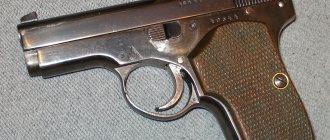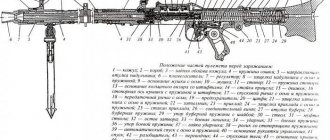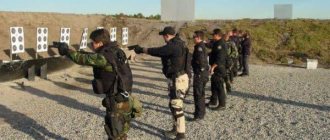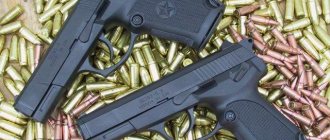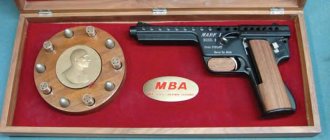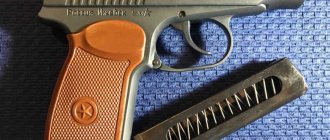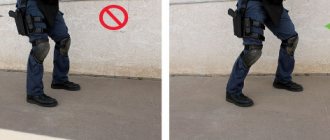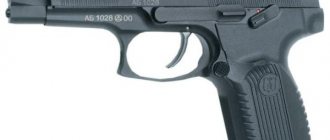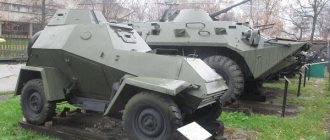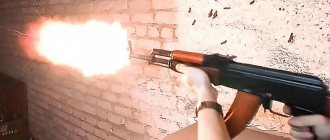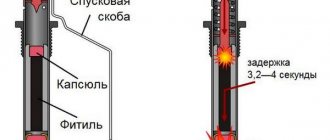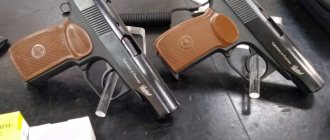| Uzi | |
| Uzi | |
| Type | Submachine gun |
| A country | Israel |
| Service history | |
| Adopted | 1954 |
| In service | India, Israel, African countries and some former Soviet republics. |
| Wars and conflicts | Vietnam War, Suez Crisis, Six Day War, Yom Kippur War, Shaba Mutiny (1978)[1], Civil War (Angola[2] • Sri Lanka • Somalia • Sierra Leone[3]) , US Invasion of Grenada[4], Portuguese Colonial War, Falklands War, Namibian War of Independence, Southern Rhodesia War, Mexican Drug War, Conflict in Eastern Ukraine. |
| Production history | |
| Constructor | Uziel Gal |
| Designed by | 1948 |
| Manufacturer | Israel Military Industries (IMI) |
| Years of production | 1954 - present |
| Characteristics | |
| Weight, kg | 3.5 kg (without magazine) 2.65 kg (Uzi-Mini without magazine) 2 kg (Uzi-Micro without magazine) 0.2 kg (empty 25-round magazine) 0.5 kg (loaded 25-round magazine) |
| Length, mm | 650/470 mm 600/360 mm (Uzi-Mini) 468/282 mm (Uzi-Micro) with stock extended/folded |
| Barrel length, mm | 260 mm 197 mm (Uzi-Mini) 134 mm (Uzi-Micro) |
| Cartridge | 9×19 mm Parabellum |
| Work principles | blowback |
| Rate of fire, rounds/min | 600 900-1000 (Uzi-Mini) 1250(Uzi-Micro) |
| Initial bullet speed, m/s | 400 375 (Uzi-Mini) 350 (Uzi-Micro) |
| Sighting range, m | 200 m |
| Type of ammunition | box magazine for 25, 32, 40, 50 or 62 rounds |
| Aim | open |
| Media files on Wikimedia Commons | |
Uzi
(Hebrew: עוזי
) is a family of submachine guns (SMGs) produced by the Israeli concern Israel Military Industries (IMI).
The name "Uzi" was given in honor of the weapon designer Uziel Gal. Uzi with wooden butt
History of creation[ | ]
In the early years of the existence of the State of Israel, after the end of the War of Independence, the Israeli army experienced an acute shortage of modern and technologically advanced small arms.
The Israelis were armed with a variety of SMGs of various models, the most widely used (in descending order) were the following models: MP 38/40, Sterling L2, STEN, Thompson SMG, Suomi, PPSh. All of them were at one time provided by the USSR and the USA.
It was decided to settle on the MP 40 as the standard PP for all branches of the military, but it turned out to be too difficult to produce and, accordingly, had a very high cost, and in 1949-1950. The Israeli government decided to develop a new submachine gun for the army, which was not inferior in efficiency to the MP 40, but adapted for mass production using existing machine equipment. Based on the results of the competition and military tests, the project of the young officer Uziel Gal won, which was adopted for service in 1954 under the name “Uzi”.
The layout of the Uzi was similar to the Sa submachine gun. 23, manufactured in Czechoslovakia and designed by J. Holecek, but was more technologically advanced and adapted for war conditions in the sandy desert (large pockets were made on the sides of the bolt box to drain away contaminants). It is not known whether Gal was familiar with Holecek's design or not - this issue is still controversial.
Gal himself really did not want the weapon to be named after him, but his request for this was ignored.
Today, Uzi has become one of the most popular types of weapons in the world: according to the IMI concern, at the end of 2001, sales of Uzi brand submachine guns reached 2.5 billion US dollars. The Uzi submachine gun is second in popularity only to the Soviet/Russian Kalashnikov assault rifle.
The safety, also known as the fire mode switch, is located on the left side of the weapon, near the handle. There is also a special safety on the back of the handle, which allows shooting only when the handle is fully covered by the hand.
Construction[ | ]
Submachine guns are based on a blowback design: shooting is done from an open bolt. The shot is fired shortly before the shutter reaches its extreme forward position. In the extreme forward position, the bolt seems to cover the breech of the barrel on top. This design allows you to slightly reduce the length of the weapon for a given barrel length.
The trigger mechanism provides two fire modes: single and automatic. The translator, also known as the safety, is located on the left side of the weapon, near the handle. There is also a special safety on the back of the handle, which allows shooting only when the handle is fully covered by the hand.
The folding stock is attached to the rear of the receiver. In the main model the butt folds down; in the more compact modifications “Mini-Uzi” and “Micro-Uzi” it is folded to the side.
The Uzi submachine gun uses both a standard 9x19 mm Parabellum cartridge and a specialized reinforced 9 mm +P+ cartridge [5]. Existing magazines are designed for 25, 32, 36, 40 and 62 rounds, including magazines from such PPs as Mr-40, STEN and Carl Gustav.
Reloading the Uzi using the “hand finds hand” principle (the weapon handle also serves as a magazine opening) is very convenient, especially in the dark.
Fire Modes
The bolt mechanism moves rearward until it reaches the rear of the receiver and the recoil spring has built up significant pressure. The spring then begins to move the bolt forward. The Uzi submachine gun has three fire modes, set by a slide switch on the left side at the top of the pistol grip. It has three positions – A, R and S:
- A – full automatic fire;
- R – semi-automatic fire, single shot;
- S – fuse, blocks firing.
If the selector is set to position A, the bolt travels all the way forward to the track to fire another cartridge; The cycle will continue as long as the trigger is held down.
When the selector is in the R position, the trigger sear engages the bolt and holds it in the rear position until the trigger is pulled again.
The Uzi submachine gun was designed with strict safety requirements in mind, so all variants have three levels of safety mechanism. The S position on the switch blocks the possibility of descent. In addition, there is another safety mechanism at the rear of the pistol grip. In order for it to fire, it must be compressed, preventing it from triggering when hit or dropped. The final frontier is the ratchet cocking mechanism, which prevents firing if the bolt is accidentally released while cocking.
Criticism of the design[ | ]
As the main weapon of the Israeli army, the Uzi PP was significantly inferior to its contemporary and even earlier models of infantry weapons in terms of tactical and technical characteristics:
- the use of a firing pattern from the rear sear and a massive bolt moving in the receiver, at the moment between pressing the trigger and pinning the cartridge primer, significantly worsened the accuracy of firing with single fire compared to PP analogues that have a traditional layout, and even more so when firing from a closed position shutter;
- significant dispersion when firing in bursts (1.5x2 m when firing at 100 m) makes burst shooting pointless even at short distances of infantry fire combat;
- in terms of flatness and accuracy due to the use of the 9x19 cartridge, the Parabellum Ultrasound is inferior to the Soviet submachine guns PPD, PPSh, PPS of the early thirties and forties with a more powerful and flat cartridge 7.62x25 TT, more suitable for army SMGs than 9x19;
- In terms of weight, the UZI was one and a half times inferior (3.65 kg for the UZI, versus 2.3 kg for the Carbine M1) to the American M1 carbine, created a decade earlier, chambered for the intermediate .30Carbine cartridge, which had three times the muzzle energy (1300 J versus 480 J Uzi) and two and a half longer direct shot range than the Uzi chambered for the weak 9x19 pistol cartridge. Created around the same years, the Soviet Stechkin automatic pistol, using a 9x18 cartridge similar in its characteristics, was not only three times lighter than the Ultrasound (weight with an attached holster-butt 1.22 versus 3.65 kg) and shorter (length when traveling position 270 mm versus 470 mm), but also surpassed the ultrasound in terms of accuracy of single shots;
- the absence in the design of the Mini-Uzi and Micro-Uzi (unlike, for example, the Polish PM-63/70 Rak and the Soviet APS automatic pistol) of a rate of fire retarder led to an increase in the rate of fire from the normal value for PP 500-600 rounds per minute to 1000 —1250 rounds/min (a 20-magazine magazine was emptied in less than one second), which turned the Mini/Micro-Uzi into a “one-shot weapon” and excluded more or less targeted fire in bursts;
- the combination of the magazine receiver and the pistol grip with its location in the center of gravity of the weapon is very good for self-defense weapons of crews and crews, as it allows you to use the PP with one hand (for example, in case of injury), however, the mass of the weapon (3.65 kg) is too large for this . In addition, a PP of this configuration is inferior in terms of shooting accuracy to a PP of a classic two-handed configuration (for example, MP-40 or “Vityaz”) with a separate fire control handle and magazine receiver, which is aggravated, moreover, by firing from the rear sear. Therefore, the MP-5, which appeared a little later, and its clones almost immediately ousted the Uzi from the market of police and military weapons in developed countries.
MP-40 and Uzi. Design allows for shorter length
Options and modifications[ | ]
- UZI Carbine
is a self-loading carbine with a barrel extended to 400 mm[6], intended mainly for the civilian market and in terms of parameters meeting the requirements for civilian weapons adopted in the United States. Produced from 1980 to 1989. - Mini-UZI
is a small-sized model developed in 1982. - Uzi-Pistol
is a self-loading pistol, characterized by its compact size, barrel shortened to 115 mm, the inability to fire automatically and the absence of a folding stock. Designed for security forces who were not supposed to have automatic weapons and for the civilian weapons market. Production started in 1984. The advantages (compared to other pistols) are the large magazine capacity (20, 25 and 32 rounds); Disadvantages include large dimensions and weight (1.7 kg without magazine), which makes shooting with one hand[7] and concealed carrying difficult. - Micro-Uzi
is a compact model, produced since 1987. For export to the USA, Micro-Uzi is produced chambered for 11.43x23 mm, with a magazine for 16 and 32 rounds. - UZI Pro
is a 2010 model. The Micro Uzi differs from its prototype in improved ergonomics and the presence of a Picatinny sighting rail on the receiver cover, which can be used to mount various types of sights. The cocking handle has been moved from the top to the left side of the receiver. The trigger mechanism allows firing in bursts and single shots from an open bolt. On both sides of the barrel there are also Picatinny rails, on which additional equipment can be installed (laser designator, tactical flashlight, etc.).
In addition, there are options that fire from a closed bolt (with a separate firing pin and mainspring).
Near the muzzle of the barrel in the Mini-Uzi and Micro-Uzi, two transverse grooves are made, which act as a compensator that reduces upward movement of the barrel when firing in bursts. To reduce the rate of fire, the mass of the bolt is increased due to a tungsten liner.
"Micro-Uzi"
Ammunition
Two types of magazines are produced for the Uzi: a standard 25-round magazine weighing 500 g and a 32-round magazine weighing 600 g when loaded. Their length is reduced thanks to the double stack.
The location of the magazine release on the lower left side of the pistol grip makes it easy to reach with your left thumb without getting in the way when shooting. The receiver is made of stamped steel with an optional sling mount, and the cocking handle is located in a slot in the top of the receiver, within easy reach of the left hand. A short ribbed section under the front sight serves as a forend, from which protrudes a short section of the barrel, held in place by a large nut.
Among the few additional accessories is a short bayonet attached to the barrel and the front of the forend.
Disadvantages[ | ]
- High rate of fire (for mini- and micro-ultrasounds)[8], as a result - excessive consumption of ammunition (this drawback is generally characteristic of blowback-breech submachine guns).
- The full-size UZI is heavier than the AKS74U or HK MP5 due to the thick walls of the receiver and wooden stock.
- Compared to MP 40, Sterling, MP 5, Kedr and other full-size SMGs of the traditional design, they are much more inconvenient for targeted shooting.
- Not the best sights and sighting range is too short. Picatinny rail is missing.
- The grip points (forend, handle) located next to each other on a full-size UZI do not allow the shooter’s hands to dampen vibrations when shooting.
Mini ERO - Croatian version of Micro-Uzi
Aim
The Uzi is a submachine gun with a basic but functional mechanical sight with factory zeroing. The front sight consists of a simple steel blade protected by two deep steel wings on either side. The sight is adjustable for horizontal and vertical elevation. Making changes requires a special tool to loosen the scope screw.
The rear sight, protected by high metal wings, is of a diopter type with a small adjustable aperture, at 100 or 200 m. The sights are strong and reliable, effective at given ranges and allow you to quickly take aim when shooting offhand.
Operation and combat use[ | ]
Uzi submachine guns of various modifications were in service with the army, police units and other law enforcement agencies in more than 95 countries around the world. Used by governmental and non-governmental paramilitary and armed forces in many wars and armed conflicts of the second half of the 20th and early 21st centuries:
- Israel - used by the IDF during the Suez Crisis of 1956 and subsequent wars and combat operations of the Israeli army; entered service with the police; currently the UZI is used mainly in rear and auxiliary units, smaller and more modern versions are in service with special forces;
- Haiti - purchased for the Haitian army during the Duvalier dictatorship[9], later they were transferred to the Haitian National Police;
- Guatemala - from 1975 it entered service with the Kaibiles and was used during the civil war in Guatemala;
- Honduras - some quantities were purchased from Israel;
- Nicaragua - in 1974-1979. entered service with the National Guard;
- El Salvador - some were purchased in the 1970s[10] and used by the government army during the civil war of 1979-1992;
- Germany - in 1959 adopted by the Bundeswehr under the name MP.2 (UZI with a permanent wooden butt), later - MP.2A1 (UZI with a folding metal butt), in 1985 replaced by MP.5;
- Estonia - in the first half of the 1990s, a batch of mini-UZI was purchased from Israel for the Estonian armed forces[11].
Saab Bofors Dynamics CBJ-MS
Butt
The first generation of submachine guns were equipped with solid, quick-release wooden stocks. Some of them had holes for cleaning rods and oil containers. In total, about four varieties of wooden stocks were produced, each of which had several sizes and profiles. A critical configuration change occurred in 1967, when wood was replaced by a folding metal version. The stock turned out to be very comfortable and durable, reduced weight by 0.1 kg, increased stealth and portability for special forces, paratroopers and security units.
In addition, polymer versions of the original wooden stocks are available, as well as plastic ones with rubber butt plates.
Clones and copies[ | ]
- Minebea PM-9 (9 機関拳銃) - a version of the “Mini-Uzi” (without stock), produced by the Japanese;
- ERO - a copy of the Uzi, the production of which began in the 1990s in Croatia (there is also a variant of the Mini ERO, a copy of the “Mini-Uzi”);
- Norinco model 320 - semi-automatic version (carbine) of the Mini-Uzi;
- Saab Bofors Dynamics CBJ-MS - a version of the Mini-Uzi chambered for the 6.5x25 mm CBJ-MS cartridge, developed by the Swedish corporation Saab Bofors Dynamics at the turn of the 1990s-2000s and first introduced in August 2000;
- Fort-226 - in August 2014, UZI-Pro was presented by NPO Fort [12]. It is used to a limited extent by the Armed Forces of Ukraine and the National Guard in the ATO zone; a certain number of SMGs of this type (both captured Fort-226 and Croatian copies) are available to the armed forces of the unrecognized DPR and LPR.
Notes[ | ]
- Sicard, Jacques.
Les armes de Kolwezi (French) // La Gazette des armes: magazine. - 1982. - Novembre (no 111). - P. 25-30. - Fitzsimmons, Scott.
Callan's Mercenaries Are Defeated in Northern Angola // Mercenaries in Asymmetric Conflicts (undefined). - Cambridge University Press, 2012. - P. 155. - ISBN 9781107026919. - doi:10.1017/CBO9781139208727.005. - Wille, Christina.
Children Associated with Fighting Forces and Small Arms in the Mano River Union // Armed and Aimless: Armed Groups, Guns, and Human Security in the ECOWAS Region (English) / Florquin, Nicolas; Berman, Eric G.. - Small Arms Survey, 2005. - P. 198. - ISBN 2-8288-0063-6. - Lee E. Russell.
Grenade 1983 (unspecified). - 1985. - P. 39. - Uzi 1985 LE brochure
- Vector Uzi Carbine Fixed Wood Stock – Vector Arms – Maine Military Supply
- M. R. Popenker. UZI pistol Archived copy from March 17, 2010 on the Wayback Machine / “Modern small arms”
- Description of Ultrasound
- « Much of the army's equipment is old and in poor condition.
It reportedly has great quantities of handguns, American-made M-1 rifles and Israeli-made Uzi submachine guns as well as tons of ammunition. Jean-Claude Duvalier was weapons crazy » Joseph B. Treaster. Haiti's leader puts his faith in the Army // The New York Times, December 5, 1987 - « Mayor Israeli Weapons Sales to El Salvador.
200 80-mm rocket launchers, 200 9-mm Uzi submachine guns , Galil assault rifles, ammunition… delivered 1974—1977
» Jane Hunter. Israeli Foreign Policy: South Africa and Central America. Boston. South End Press. 1987. page 110 - The Estonian Defense Forces from 1991 onwards Archived copy from September 13, 2014 on the Wayback Machine / Estonian War Museum
- Submachine gun "Fort-226" / official website of NPO "Fort"
